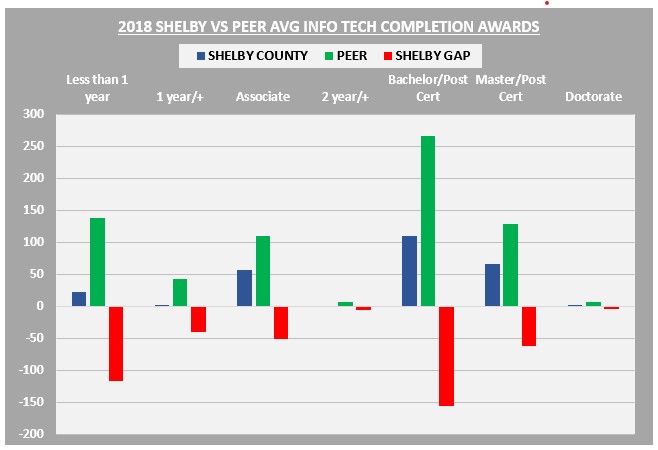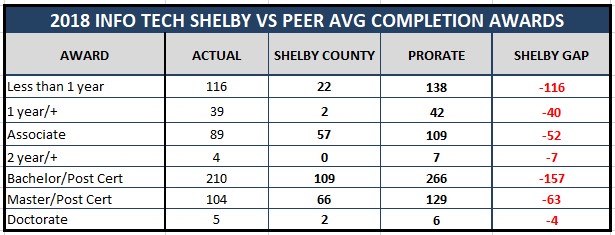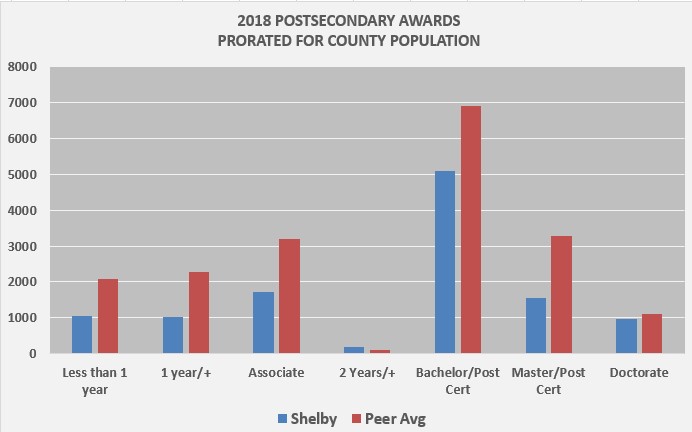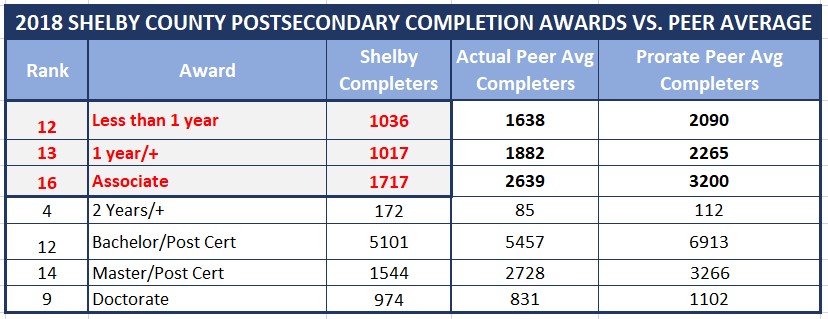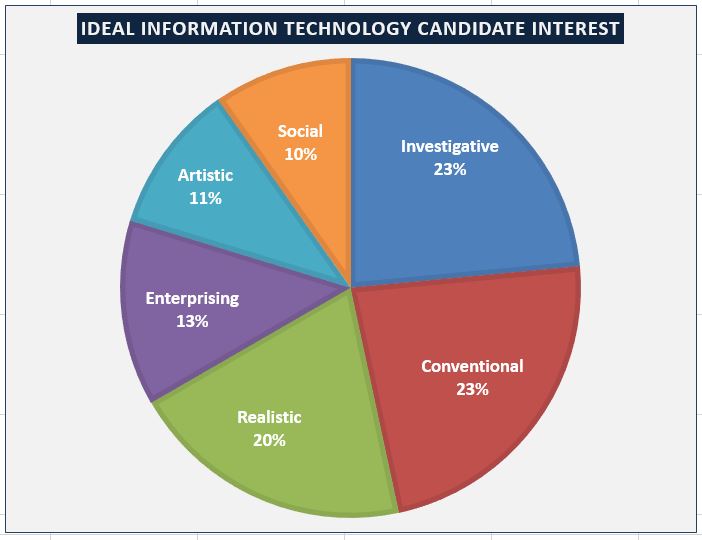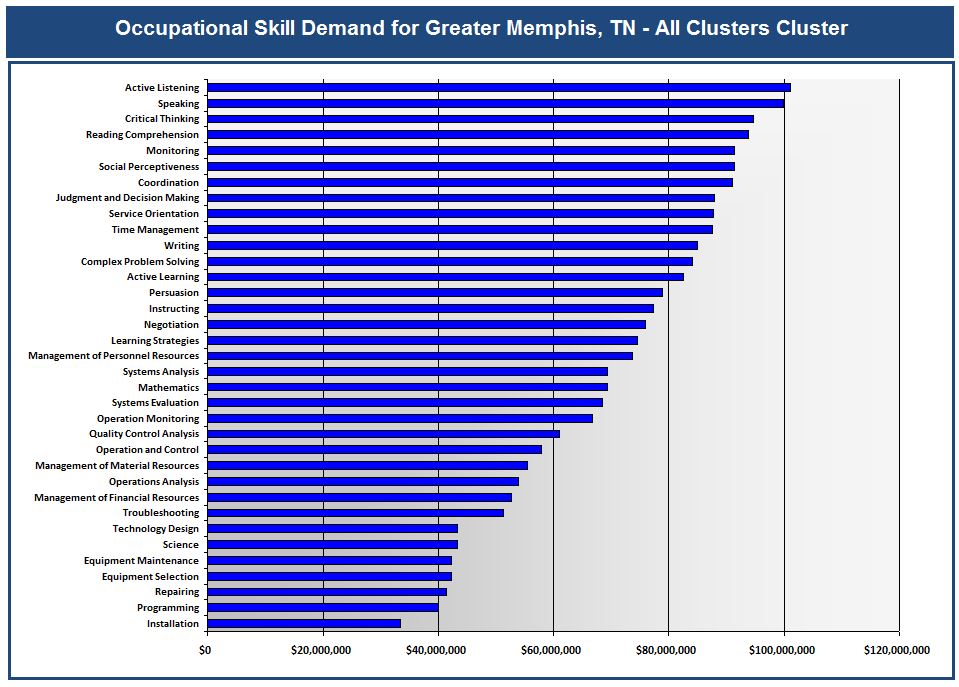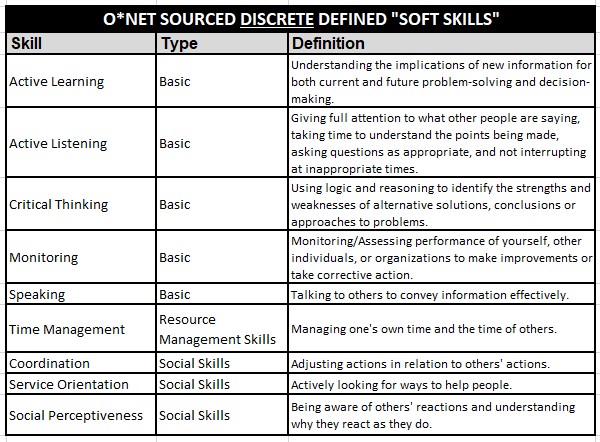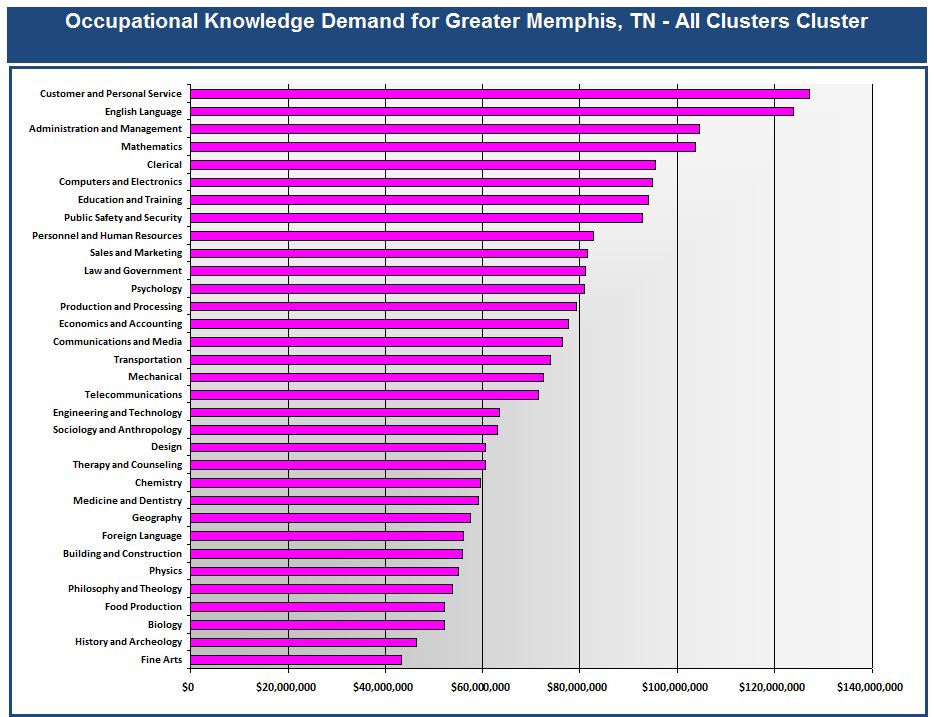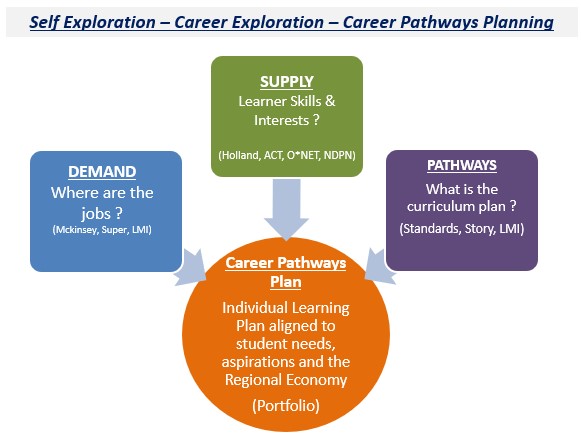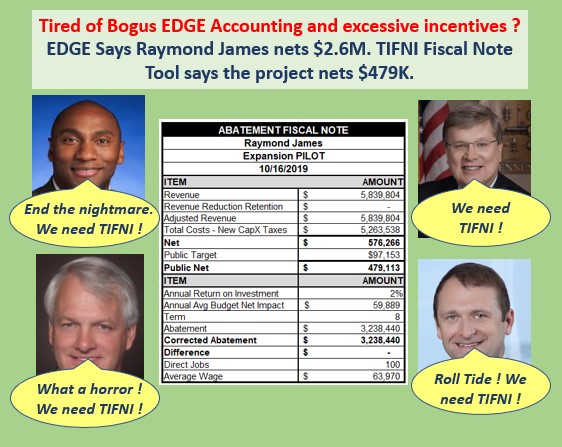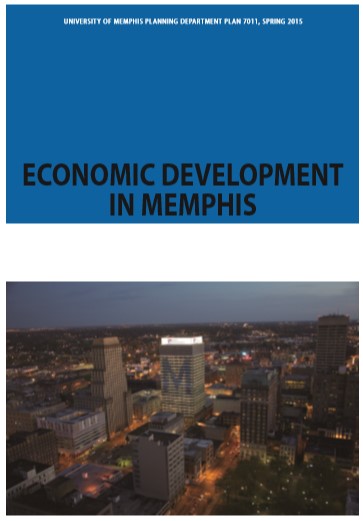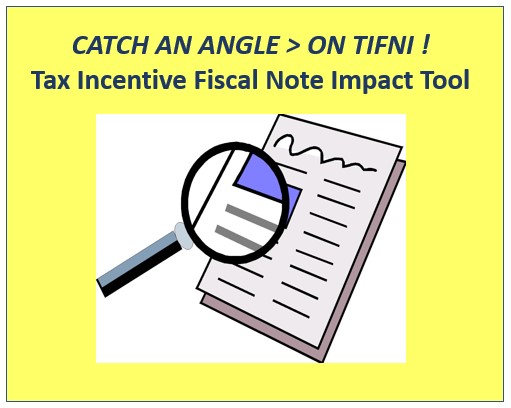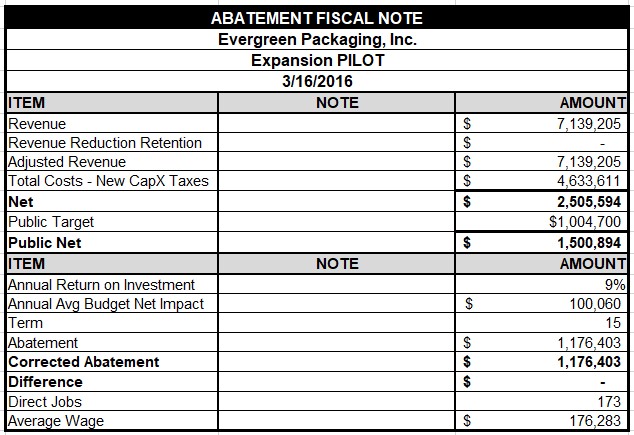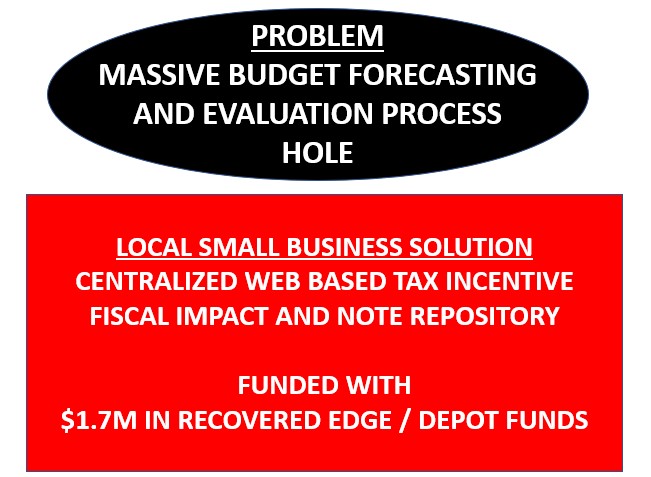One way to improve economic development outcomes and local wages is to increase enrollment and employment in information technology pathways and careers. Info Tech careers pay $20K more than the average for all occupational groupings. If we assume a 2.0 economic impact multiplier, for every grouping of 1,000 retained and employed info tech postsecondary completers that equates to $40M in increased annual wages. The above chart shows the Shelby County gap compared to 15 peers in info tech postsecondary completion awards when compared to the peer average.
The Upskill901 conference was successful at convening stakeholders and alerting attendees of the coming disruption of automation. But few participant tools were left behind by the out of town think tanks in Brookings and Burning Glass to facilitate needed conversations, thinking and planning in support of connected workforce development implementation.
Placeholders are like a database in tables, queries, user interface and reporting output in that that provide organizing constructs to help answer questions and provide connectivity to services. Examples of placeholder constructs that could have been left behind for connecting the workforce development system include:
- Benchmarking, goal setting, planning, implementation and evaluation
- Data, assessment and career pathways curriculum
- Identify, promote, enroll and graduate (IPEG)
- Relevant local data
To that extent, this blog is expanding on those gap opportunities while proposing solutions for connected workforce development. In the previous blog, we disclosed a methodology to identify occupational groups in need of career pathways promotion intervention based on local ecosystem and employer demand. This blog will drill down on the need for more information technology postsecondary awards to serve coming transformational automation.
Getting Specific with Workforce SMART Goals
In the last blog we took a guess at SMART goals for information technology, business/finance and entertainment media careers. This blog will get specific by writing SMART goals for increasing information technology completion awards by level. The above table, by award level, shows the “ACTUAL” peer average completion awards, “SHELBY COUNTY” actuals and a “PRORATE” column to adjust the peer average based on population.
With the above, we can generate data informed Shelby County SMART goals to achieve above peer average completion rates in the information technology field. See below SMART goals for increasing Shelby County information technology completion awards:
- Increase less than 1 year awards by 50 in 2 years and 150 in 4 years
- Increase 1 year/+ awards by 15 in 2 years and by 50 in 4 years
- Increase Associate awards by 20 in 2 years and 60 in 4 years
- Increase Bachelor / Post Certification by 60 in 2 years and 180 in 4 years
- Increase Masters / Post Certification by 30 in 2 years and 70 in 4 years
- Increase Doctorates by 2 in 2 years and 6 in 4 years
There is nothing fixed about the above goals but just a demonstration of how data can be used to inform Specific, Measurable, Attainable, Relevant and Timely (SMART) goals for increasing postsecondary information technology completion awards.
Peer Rankings
So how has Shelby County fared compared to their peer cities in information technology postsecondary completion awards across all levels ? The data can be found below:
Conclusion
Data informed benchmarking to inform SMART goals is fundamental in connected workforce development implementation. In this blog, we used the peer average of info tech postsecondary awards to benchmark Shelby County completion awards to inform goal setting. Hopefully, this process or a similar one will be used to catapult economic and workforce development with a emphasis on increasing information technology completion awards and local wages.
Data Source References

